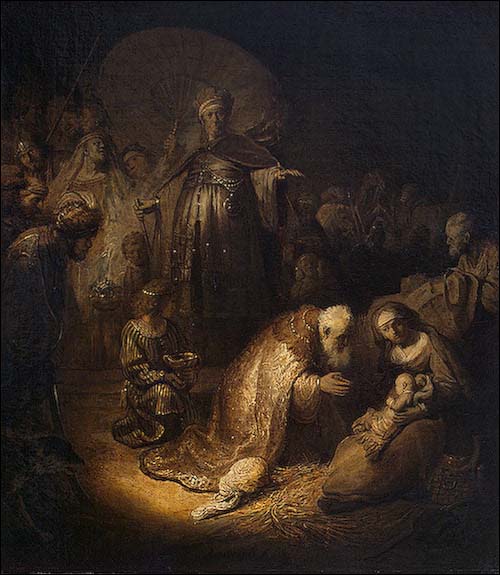From The Meaning of the Pentateuch (Sailhamer, John.
The Meaning of the Pentateuch: Revelation, Composition, and Interpretation. Downers Grove, Ill.: IVP Academic, 2009.)
When, however, it comes to the meaning of the biblical texts as historical narratives, the evangelical view of history is such that historical reconstructions of the biblical events and narratives cannot and should not be allowed to take the place of close study of the written texts and the meaning they give to the events they recount.
It is not a question of whether one can accurately fill in the historical details that have been left out of the biblical picture. Evangelicals have always believed they could do so successfully. The ability to fill out the biblical picture is at the heart of the problem. Using modern historical tools, we have the same ability to fill in the historical details of scriptural narratives as we have of painting intricate details of seventeenth-century life over the shadows of a Rembrandt painting. By painting shadows, Rembrandt deliberately left out many historical details that may have given us much information about the events he recorded on canvas. Historians who understand the culture and life setting of seventeenth-century Europe could easily replace Rembrandt's dark shadows with historically accurate details of the world around him. In the same way, historians of the ancient world could fill in many historically accurate details about the events recorded in biblical narratives. They could, for example, help us to better understand the nature of biblical covenants by comparing them with ancient treaty documents. There is no end to the amount of material now available to "fill in" the biblical picture. The problem is that this would have the same effect on the biblical (OT) narratives as on Rembrandt's paintings. Filling in the biblical narratives with additional historical material may teach us things about the events of which the biblical writers were speaking, but the evangelical's goal in interpretation and biblical theology is not an understanding of those events as such. The goal, as evangelical must see it, is the biblical author's understanding of those events in the inspired text of the Bible (OT). We should not seek to know what lies behind or beneath Rembrandt's shadows. It is the shadows that are a central part of the paintings, not the historical details that lie behind the shadows and are thus not in the painting. Rembrandt's meaning lies as much in what is not seen in his painting as in what is seen. The shadows, by blocking out the irrelevant details, help us focus on what is seen. The effect of us adding more details to the painting would be to lose Rembrandt's focus. The task for evangelicals is to recover the sense of what the biblical texts intend to tell us about the events they are recounting. We can arrive at that goal only by exegesis of the text. (104)


No comments:
Post a Comment